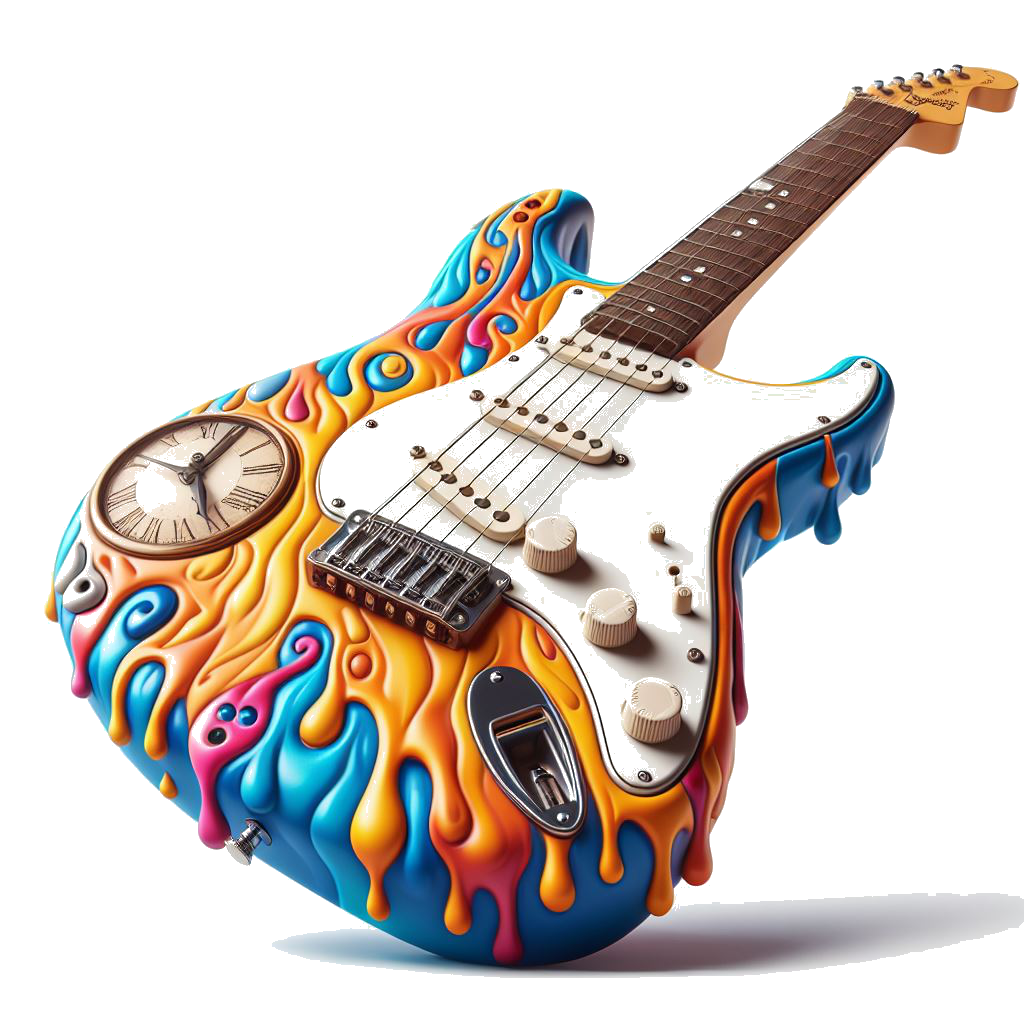Colloquially termed effects pedals, guitar pedals stand as fundamental electronic equipment with the unique capability to transform the inherent sound of your guitar. By manipulating the electrical signal from your guitar before it reaches the amplifier, these pedals can infuse your music with unparalleled depth, ambiance, crunch, and an extensive array of sound textures. This transformative ability allows guitarists to explore beyond the natural sound of their instrument, venturing into realms of tonal complexity and sonic diversity that were once unimaginable.
Moreover, the interactive nature of guitar pedals with the player adds another layer of dynamism to the performance. The way a guitarist tweaks the knobs, engages the pedals at just the right moment, and combines different effects can result in a performance that is as unique as a fingerprint. This personal touch means that two guitarists with identical pedal setups can produce vastly different sounds based on their playing styles and the nuances of how they engage with their pedals.
In essence, guitar pedals are not just tools for sound modification; they are instruments of creativity and expression in their own right. They offer a gateway to exploring the depths of sound, enabling musicians to sculpt their tone with precision and imagination.
So get ready for exploring guitar pedals for beginners!
Types of Guitar Pedals
The landscape of guitar pedals is rich and diverse, with each type serving a specific role in shaping the sound of your guitar. From adding warmth and texture to creating complex soundscapes, these pedals are essential tools for any guitarist looking to enhance their sound. Below, we’ll explore the various guitar pedals, providing real examples to show their unique purposes and effects.
Distortion and Overdrive
Distortion and overdrive pedals are fundamental for achieving a gritty, intense sound synonymous with rock, metal, and blues. The Boss DS-1 Distortion is a quintessential example, known for its robust, crunchy texture that can drive a guitar’s sound from subtle bite to full-on roar.
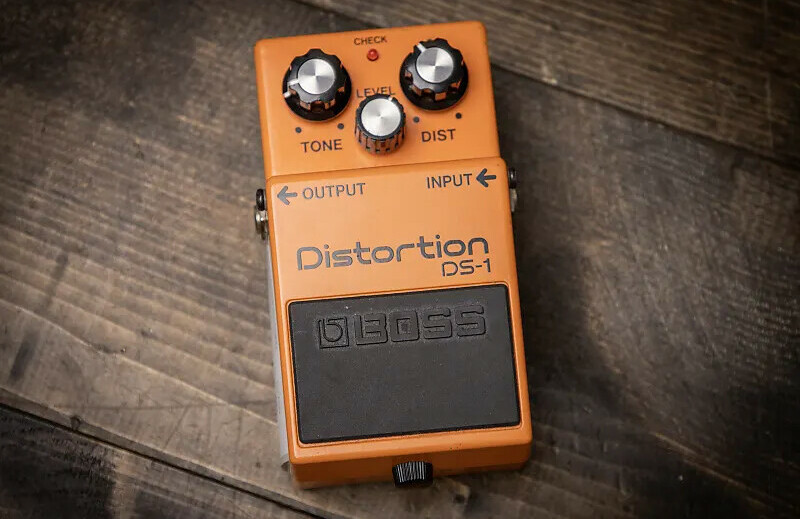
Another iconic pedal in this category is the Ibanez Tube Screamer, revered for its smooth overdrive that enhances the natural dynamics of your playing without overwhelming the guitar’s character. These pedals can dramatically alter the energy and attitude of your music, making them staples on many pedalboards.
Delay
Delay pedals repeat your guitar’s signal at set intervals, creating an echo effect that ranges from a subtle thickening of the sound to a pronounced, rhythmic repetition. The TC Electronic Flashback is versatile, offering everything from analog-inspired warmth to pristine digital delays.
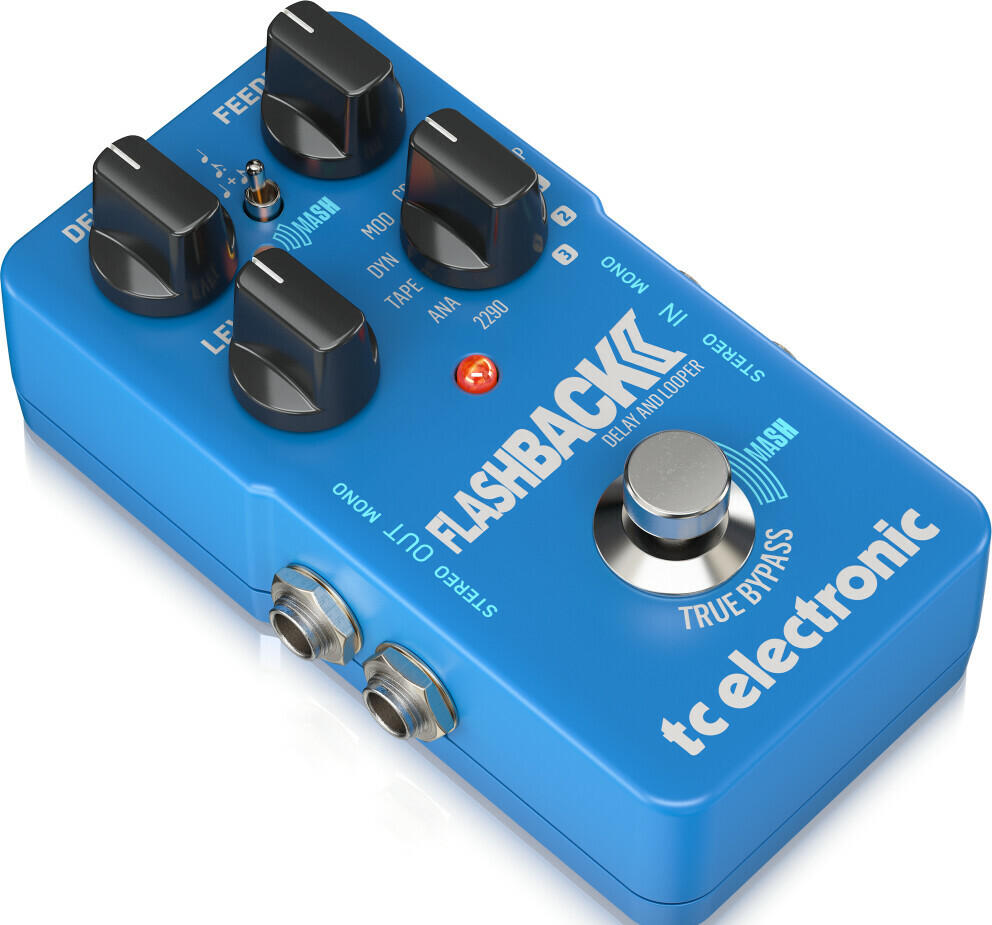
Another notable mention is the MXR Carbon Copy, which provides rich, analog delay tones with a simple interface, making it a favorite among players seeking a vintage sound.
Reverb
Reverb pedals simulate the natural acoustic reverberations of different spaces, adding depth and atmosphere to your playing. The Strymon BigSky is renowned for its high-fidelity reverb sounds, capable of emulating everything from the subtle reflections of a small room to the expansive echo of a large hall.
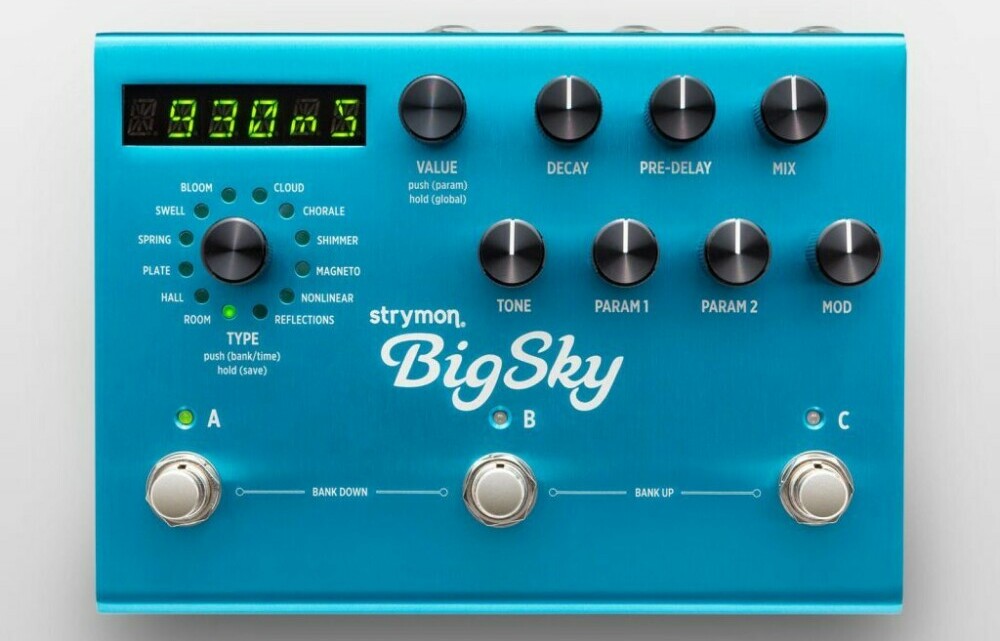
For those looking for something a bit different, the Electro-Harmonix Holy Grail offers a straightforward approach to reverb with lush, organic settings that can fit a variety of musical styles.
Chorus, Flanger, and Phaser
These modulation pedals enrich your tone by adding movement and texture, creating a sense of depth and space. The MXR M234 Analog Chorus pedal is celebrated for producing a wide range of sounds, from subtle thickening to a liquid, swirling effect.
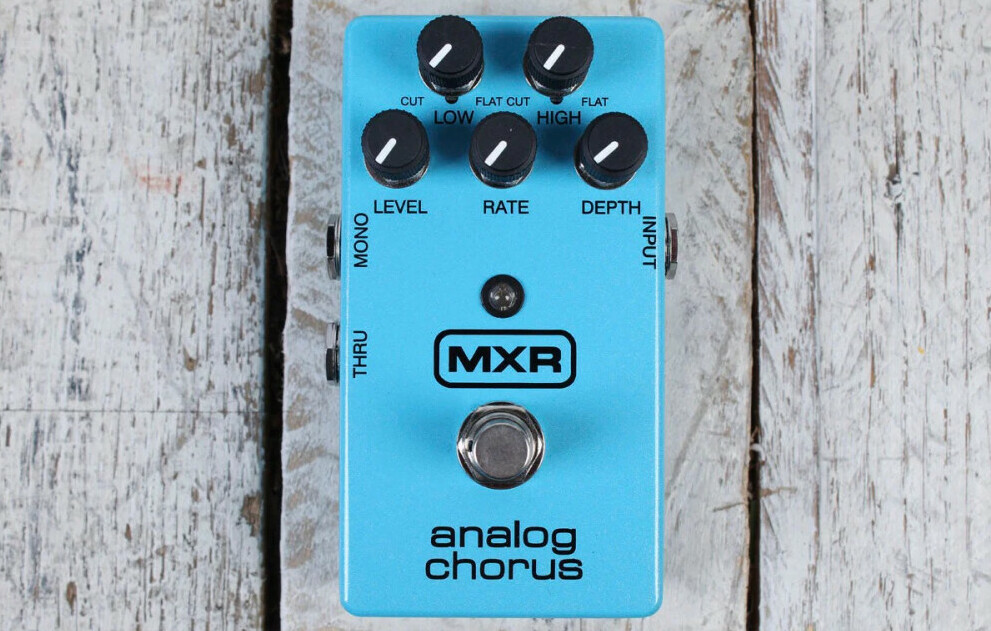
The Electro-Harmonix Electric Mistress is a classic flanger known for its rich, spiraling tones, perfect for creating a psychedelic vibe. On the other hand, the Phase 90 by MXR offers a smooth, velvety phaser effect that can range from subtle nuance to a more pronounced, sweeping motion.
Echo Pedals
Echo pedals are often considered a subset of delay effects, replicating the vintage echo effects of tape and drum echo machines. The Boss RE-2 Space Echo is the authentic sound and behavior of the original Space Echo now available in the famous BOSS compact series, providing warm, organic delay and reverb effects that can transport your sound back in time.
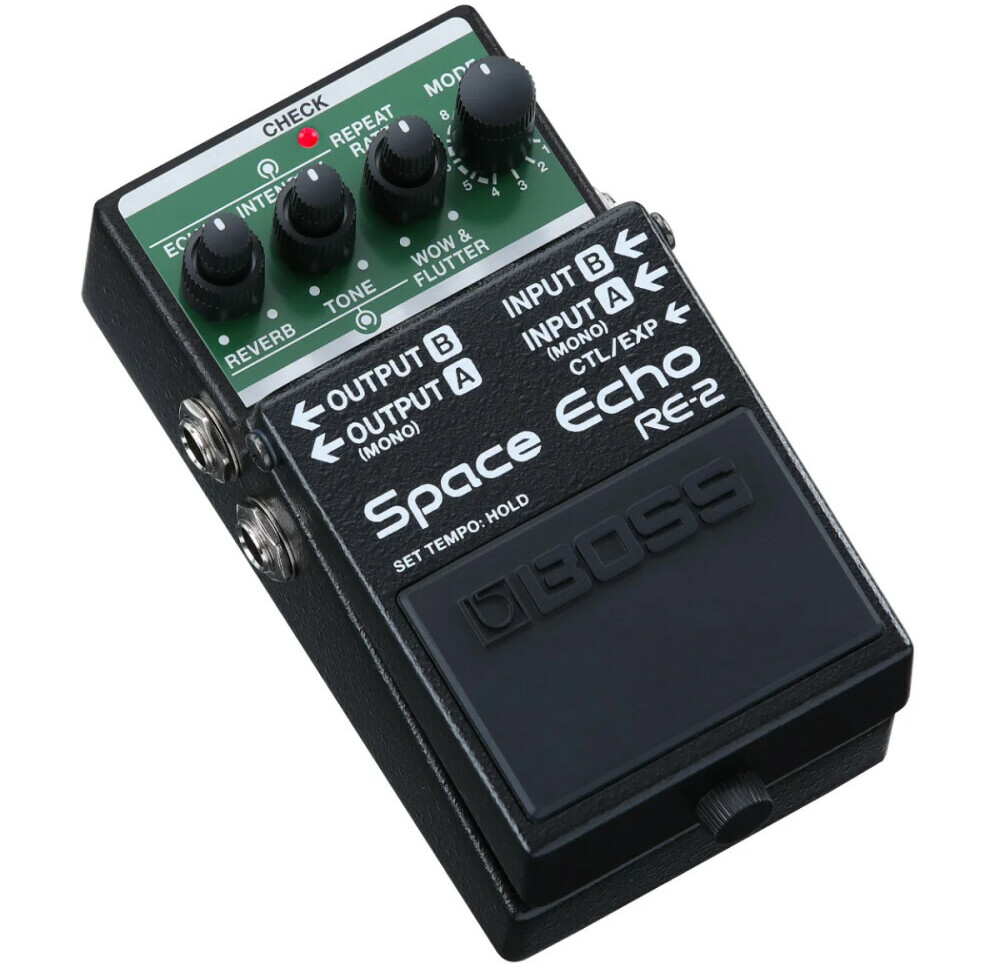
Its ability to mimic the character and quirks of tape echo units makes it a sought-after pedal for enthusiasts of vintage sounds.
Loop Pedals
Loop pedals allow you to record segments of your playing and play them back in real time, creating layers of sound that can be used for practice, composition, or live performance. The Boss RC-3 Loop Station is a compact yet powerful looper with a vast internal memory capable of storing up to three hours of stereo recording.
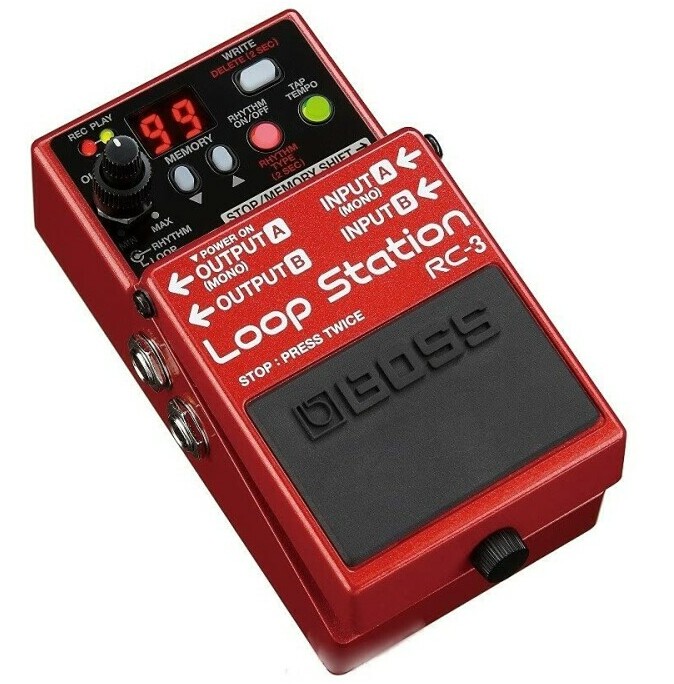
For those looking for more intuitive control, the TC Electronic Ditto Looper offers simplicity and high-quality sound in a user-friendly package, making it ideal for beginners and professionals alike.
Each type of guitar pedal opens up new possibilities for sound exploration and expression. Whether you’re looking to add warmth and depth with a reverb pedal, create rhythmic textures with a delay, or sculpt your tone with distortion and overdrive, there’s a pedal out there to suit your needs.
Signal Chain Basics
Understanding the signal chain is crucial for any guitarist looking to dive into the world of pedals. The signal chain refers to the order in which your guitar’s signal passes through various effects pedals before reaching the amplifier. This order is not merely a matter of convenience; it can dramatically influence the character and quality of your sound.
Starting with dynamic pedals, such as compressors, sets the foundation for your tone. A compressor evens out the dynamics of your playing, ensuring that every note is heard clearly and consistently, regardless of how hard or soft you play. Placing this effect at the beginning of your signal chain ensures that it works with the cleanest, most unaltered signal possible, providing a stable basis for further effects.
Following the compressor, tone-shaping pedals like distortion and overdrive come into play. These pedals modify the core sound of your guitar, adding warmth, grit, or saturation. By placing them early in the chain, you ensure that the distorted signal can be further modulated and refined by subsequent effects.
Modulation effects, such as chorus, phaser, and flanger pedals, add texture and movement to the sound. These pedals create slight variations in the signal’s pitch or timing, producing rich, swirling tones that can give your sound a sense of depth and complexity. Positioning these after your tone-shaping pedals allows the modulation to affect the already modified tone, integrating the effects more seamlessly.
Time-based effects like delay and reverb are typically placed at the end of the signal chain. These effects work by replicating your guitar’s signal and introducing it back into the mix after a short delay, creating echoes or the illusion of spatial environments. By positioning these effects last, they can process the cumulative result of all previous effects, enveloping the entire sound in ambiance and space without muddying the core tonal qualities shaped by earlier pedals.
Experimentation is key to mastering your signal chain. While the typical setup provides a solid starting point, the guitar pedals’ beauty lies in their rearranging ability to discover new textures and sounds.
In essence, the signal chain is not just a technical necessity but a creative tool. Encouraging experimentation and a willingness to explore different arrangements can lead to discovering your signature sound, one pedal combination at a time.
Analog vs. Digital Pedals
The debate between analog and digital pedals is long-standing in the guitar community, with each type offering distinct characteristics and advantages. Understanding their differences is crucial for any guitarist looking to build or expand their pedalboard.
Analog Pedals
Analog pedals use physical electronic components such as transistors and capacitors to modify the guitar’s signal. This process often produces a warmer, more natural sound that many players find appealing. A classic example of an analog pedal is the MXR M169 Carbon Copy Analog Delay. Renowned for its rich, warm echoes and simple operation, it’s a favorite among players seeking the vintage delay sounds reminiscent of the 70s and 80s.
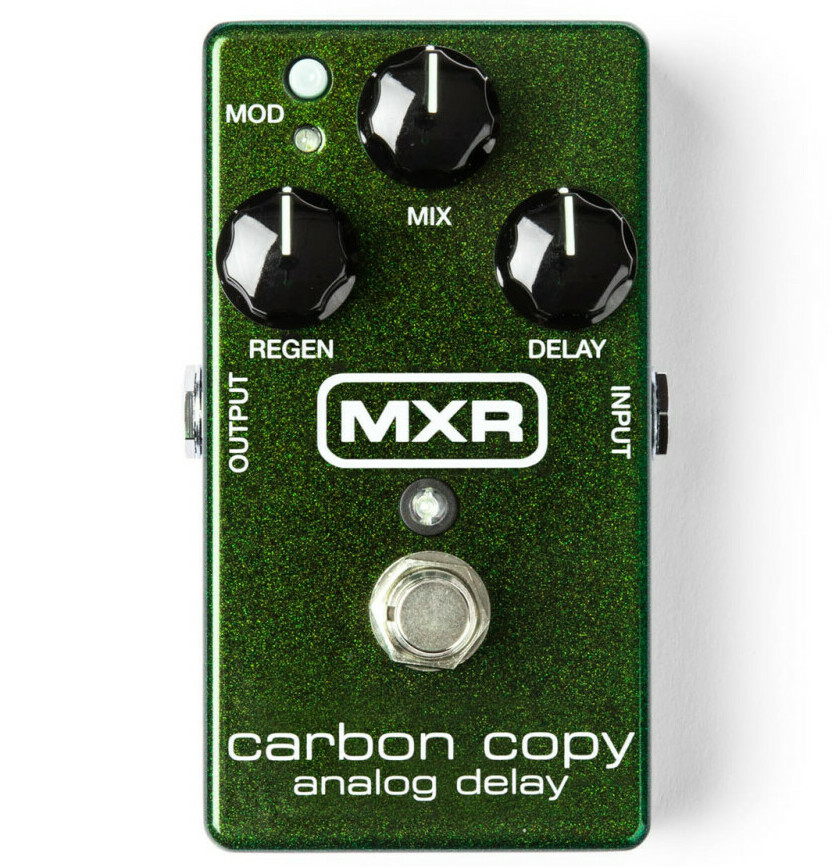
Another iconic analog pedal is the ProCo Rat 2 Distortion, which delivers a raw, aggressive distortion that can range from mild overdrive to full-on fuzz, showcasing analog circuitry’s versatility and dynamic response.
Digital Pedals
Digital pedals, on the other hand, use Digital Signal Processing (DSP) to replicate or enhance the guitar’s sound. This technology allows for a broader range of effects and more precise control over the parameters of those effects. The Line 6 HX Stomp is an exemplary digital multi-effects pedal that utilizes advanced DSP to emulate the sounds of various amplifiers, cabinets, and classic and modern effects pedals. Its versatility and sound quality make it a powerful tool for guitarists of all genres.
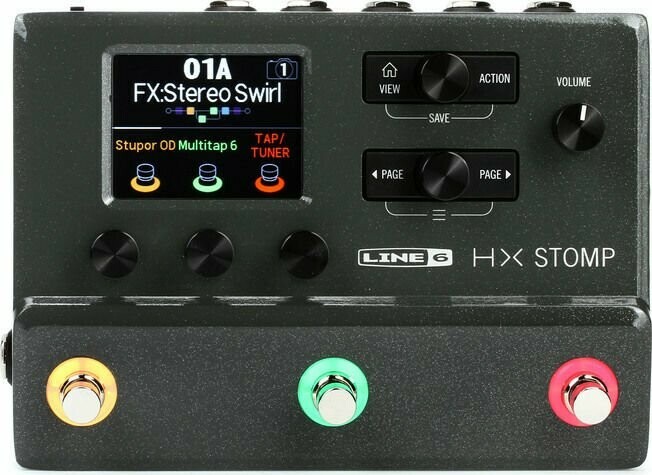
Similarly, the Strymon Timeline is a digital delay pedal offering a wide array of delay types, from digital clean delays to analog and tape delays emulations, with extensive parameter controls for crafting the perfect delay sound.
Personal Preference and Specific Sound
Choosing between analog and digital pedals often comes down to personal preference and the specific sound a guitarist aims for. Analog pedals, with their inherent limitations, such as shorter delay times or less precise control over effects parameters, are often seen as part of their charm, contributing to a more “organic” sound.
Digital pedals, with their ability to accurately emulate a vast array of sounds and offer extensive tweaking capabilities, are favored by guitarists who value versatility and precision. They are particularly suited to genres that demand a wide range of sounds or for players who prefer having multiple effects at their disposal without carrying numerous individual pedals.
Ultimately, the choice between analog and digital pedals is not about which is better but which is more suited to the needs and preferences of the individual guitarist. Many players find that a combination of both analog and digital pedals provides the best of both worlds, allowing them to explore a wide range of sounds and improve the quality of their performances.
Must-Have Pedals for Beginners
For those just starting on their guitar journey, building a pedal collection can be an exciting venture into shaping your sound. Certain pedals are considered essential for their foundational role in creating a versatile and dynamic tone and ensuring precision in live performances.
Tuner Pedals
A tuner pedal is the first must-have on any pedalboard, crucial for keeping your guitar in tune, especially during live performances. The TC Electronic PolyTune 3 Mini is an exemplary choice, known for its fast and accurate tuning.
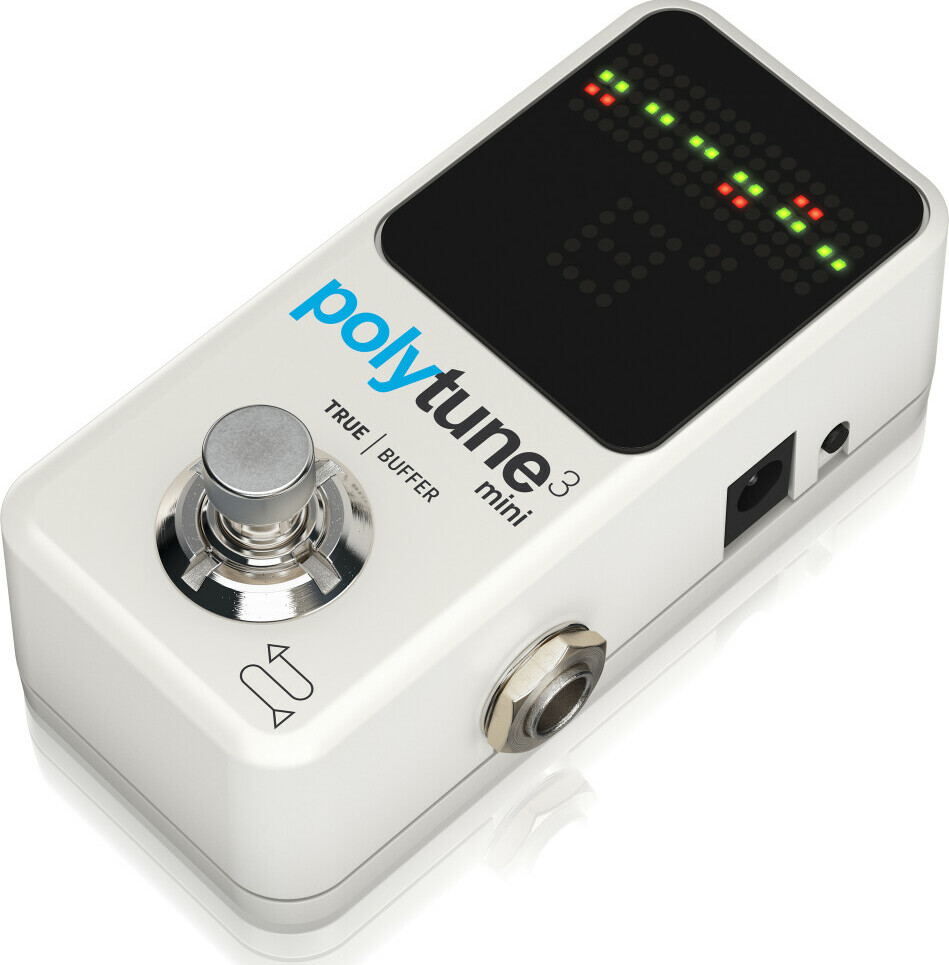
It allows for strumming all strings simultaneously, showing which ones need tuning at a glance, a feature that saves time and ensures your guitar is always ready to play.
Distortion/Overdrive Pedals
To add character and grit to your sound, a distortion or overdrive pedal is essential. For beginners, the Boss DS-1 Distortion provides a classic distortion sound suitable for a wide range of music styles, from rock to metal. Its straightforward controls make it easy to dial in a desired amount of crunch.
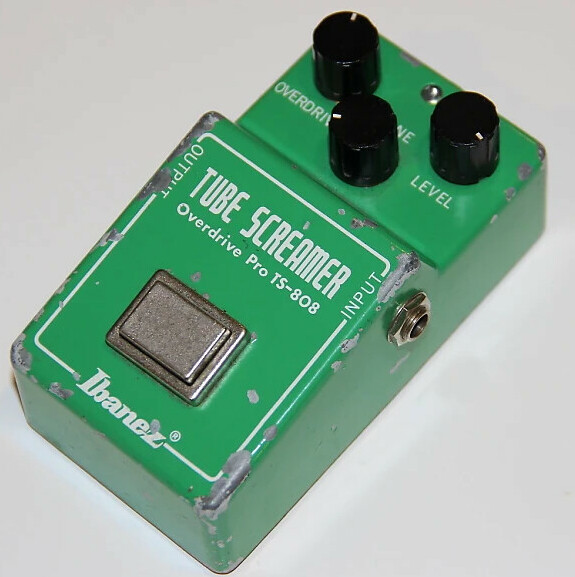
Alternatively, the Ibanez Tube Screamer TS808 is a legendary overdrive pedal, perfect for blues and rock guitarists seeking a smoother, more nuanced overdrive that enhances the guitar’s natural sound without overwhelming it.
Delay Pedals
A delay pedal adds depth and texture to your playing, creating echoes that can range from subtle to expansive. The MXR Carbon Copy is a great beginner-friendly option, offering a warm analog delay with simple controls. Its versatility makes it suitable for anything from slapback echoes to longer, atmospheric repeats, enriching your solos and rhythm parts alike.
Reverb Pedals
Reverb is another foundational effect, simulating the natural acoustics of different spaces. The Electro-Harmonix Holy Grail Nano is a fantastic entry-level reverb pedal, providing high-quality spring, hall, and Flerb (flange + reverb) settings in a compact, easy-to-use unit.
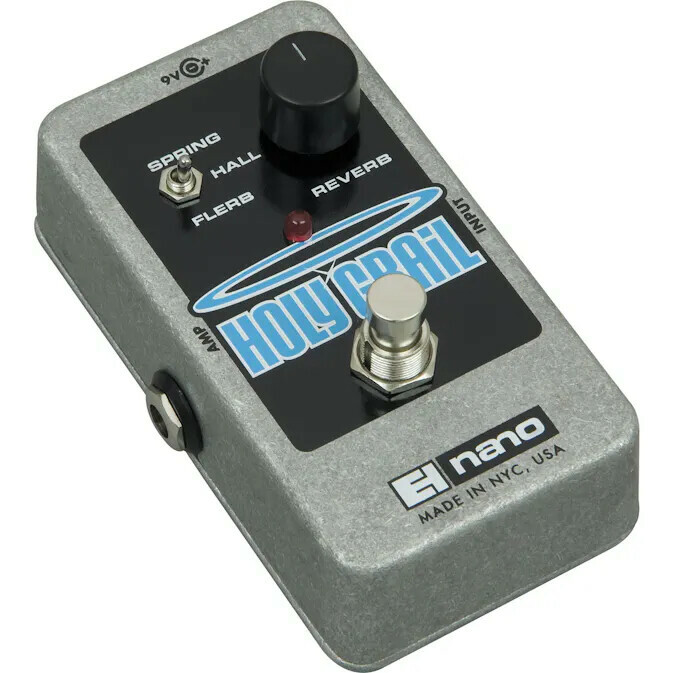
It’s perfect for adding spatial depth to your tone, from subtle ambiance to cavernous echoes.
Echo Pedals
Echo pedals, closely related to delay pedals, offer a distinctive repetition of sound that can add a vintage or ethereal quality to your playing. The Boss RE-2 Space Echo is an excellent choice, replicating the iconic Roland RE-201 Space Echo with its tape echo simulations and lush spring reverb. Its intuitive controls allow beginners to experiment with different echo textures and timings easily.
Loop Pedals
A loop pedal is invaluable for practicing, composing, and live performance layering. The TC Electronic Ditto Looper is highly recommended for beginners due to its simplicity and high-quality sound. It offers straightforward looping functionality with a single knob for loop level, making it easy to start creating layered soundscapes right away.
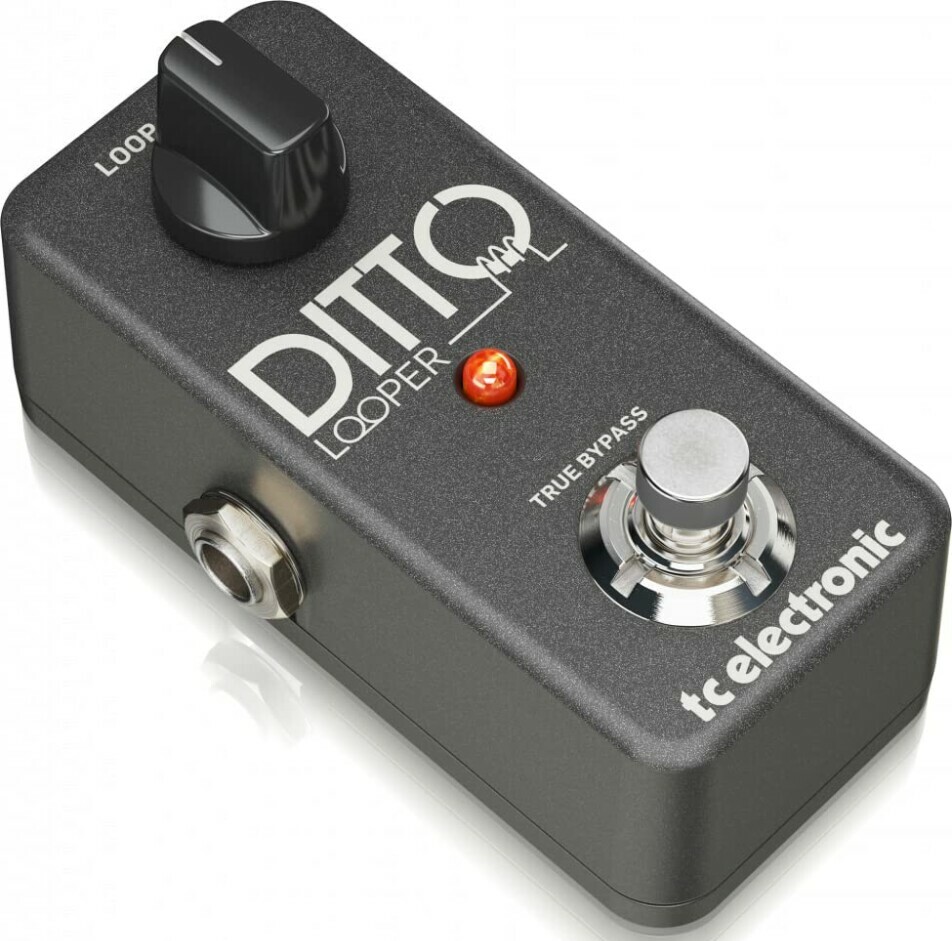
Exploring guitar pedals opens up a new realm of sonic possibilities. By understanding the basics, experimenting with different effects, and continually learning, you can craft a sound that’s uniquely yours. Remember, the journey into guitar pedals is as much about exploration as it is about music, so embrace the adventure and let your creativity flourish.
Please feel free to post a comment below.
